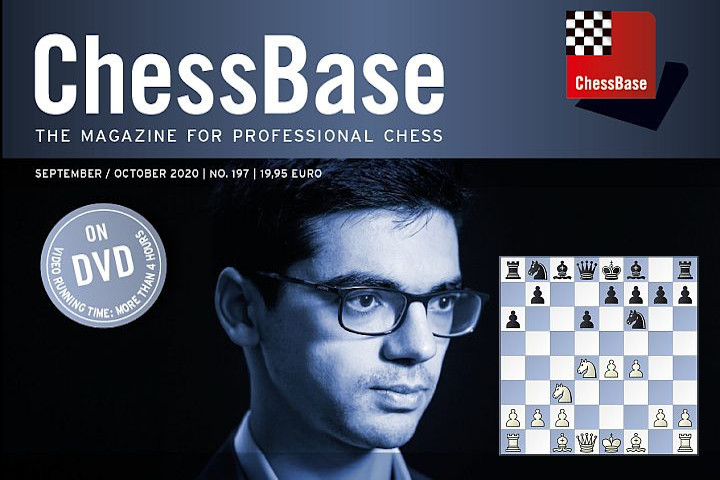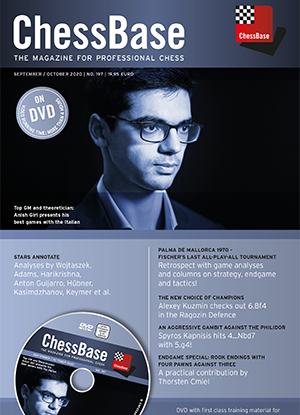


The starting position of our discussion emerges after 1.e4 c5 2.Nf3 d6 3.d4 cxd4 4.Nxd4 Nf6 5.Nc3 a6 6.f4.
White's last move has been gaining in popularity recently and has been employed by top players such as Yu Yangyi and Alireza Firouzja. 6...e5. 6...Qc7 used to be my choice against 6.f4, but Yu Yangyi's new idea 7.f5!? was a good reason to revisit this variation and examine the main line 6...e5.
7.Nf3 Not the only white continuation. 7.Nf5 is a rare (and not very challenging) move and Black has different ways to counter it. The options are discussed in Dvalishvili,P - Najer,E ½-½. 7.Nb3, however, is not as harmless as it looks. White keeps supporting the pawn advance g2–g4 which is why ...Nb8–d7 is not recommended. 7...Nc6 is a good way to react and analysed in the correspondence game Strbad,F - Coplin,L ½-½. 7...Nbd7.
8.a4 This is the most popular continuation, stopping Black's expansion with ...b7–b5 on the queenside. Instead, 8.Bc4 invites 8...b5 and White has to be careful not to be worse already. The continuations are discussed in Schuster,P - Wunderlich,H 0-1. 8.Bd3 is a more sensible development move than 8.Bc4. Yet again, Black is not challenged and fine with natural developing moves, as can be seen in Tompa,J - Efimenko,Z ½-½. 8...Qc7!
Black takes the time to develop the queen first to control the centrer once more and, more importantly, take away White's option to place the bishop on c4. 9.Bd3 Be7 10.0–0 0–0 11.Kh1 White moves the king prophylactically out of the g1–a7 diagonal. This move and other alternatives (11.Nh4 and 11.Qe1) are extensively analysed in the sample game Smirin,I - Dominguez Perez,L ½-½. 11...Nc5
Black increases the pressure on the white centre and also has the option to trade the bishop on d3 at the right moment. 12.Qe1 Re8.
In this variation, the rook is typically placed well on e8, supporting its own pawn and, after a trade ...exf4, increasing the pressure on the e4–pawn. Therefore, typically White trades at this moment to keep the e-file closed. 13.fxe5 dxe5 14.Qg3 Be6.
15.Ng5 White can accept the pawn sacrifice with 15.Qxe5, but Black obtains great compensation. This was seen in the recent game Smirin,I - Dominguez Perez,L ½-½. 15...Nxd3 16.Nxe6 fxe6 17.cxd3 Rf8.
We have been following the correspondence game Van Leeuwen,E - Zhak,B ½-½. While the position is equal, Black's play already seems easier and in the aforementioned encounter, it was also White who had to be precise.
Conclusion: Meeting 6.f4 with 6...e5 is the most principled way to react to White's early aggression. The play can develop in different directions, depending on where White places the knight (f5, b3 or f3) and later the bishop (c4 or d3). For the most part, Black plays natural developming moves, applying pressure to the central e4-pawn. Still, there are a few nuances and move order tricks to be aware of. With the games and analyses in this article, I'm confident you are well-equipped to face 6.f4 against the Najdorf in a practical game.
You will find the complete article with all games and analyses in ChessBase Magazine #197 (September/October 2020).

Order now at the ChessBase Shop!
Available for download (including booklet in pdf) or on DVD + booklet (Post).
You have not yet read the ChessBase Magazine? No problem. We have something for you.
The trial subscription with 3 issues + 3 months Premium Membership (33% cheaper) for only €39.90
| Advertising |